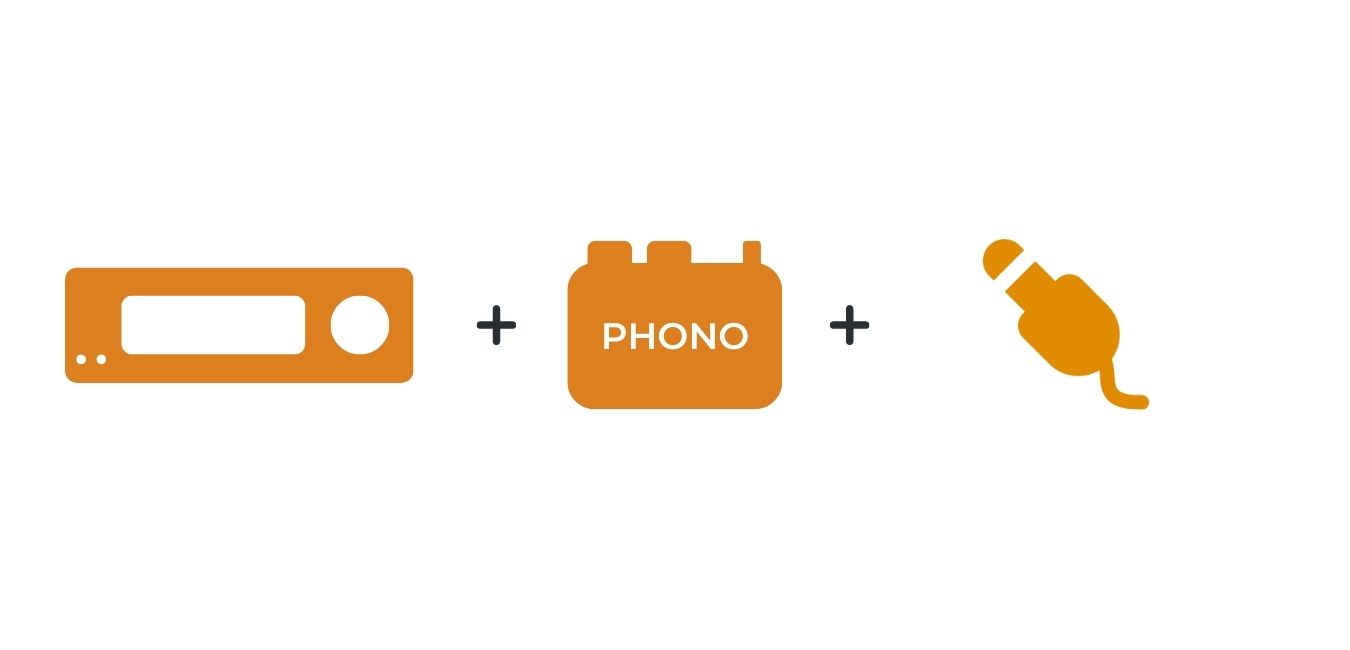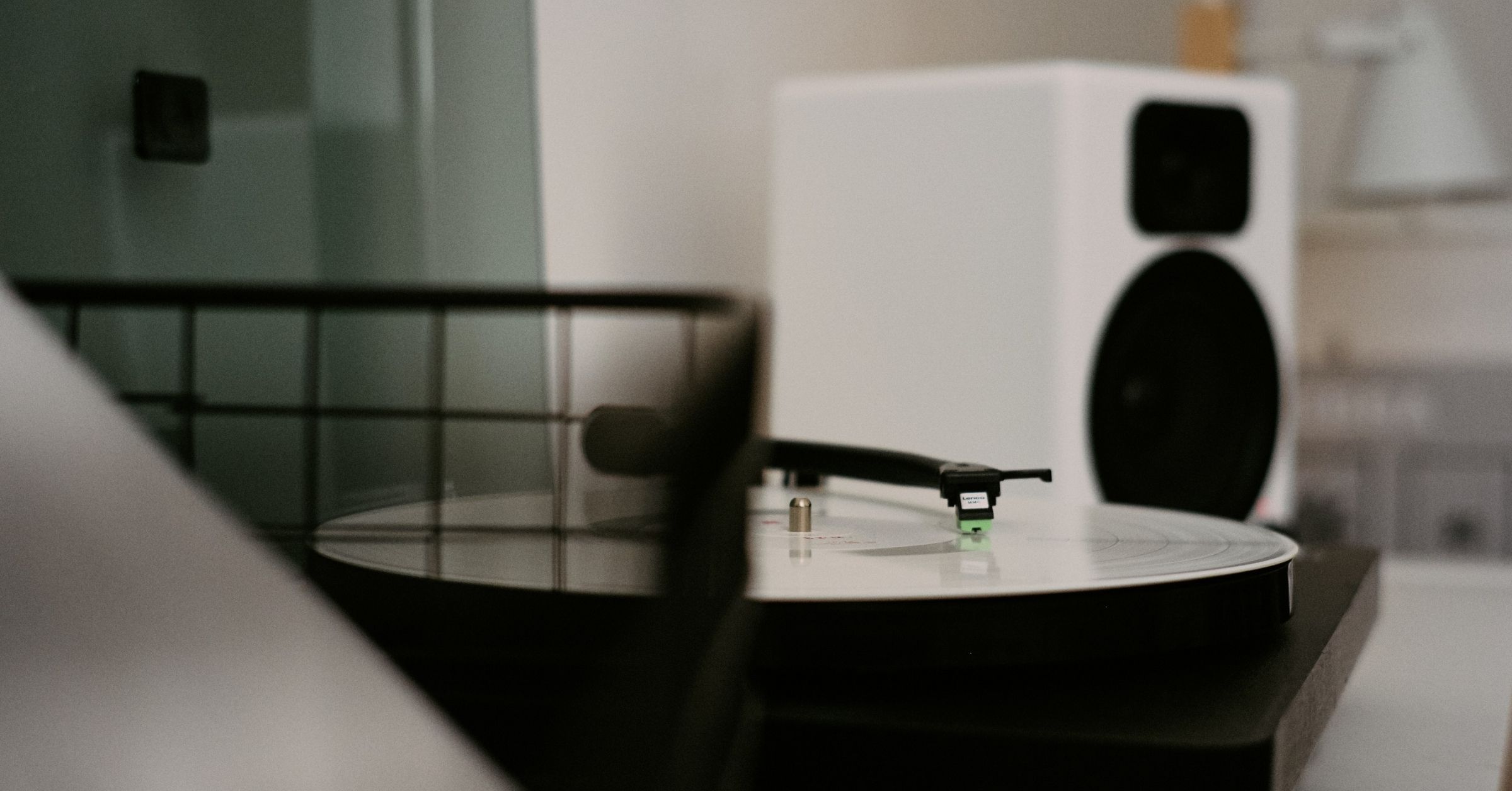If you’re getting started in the world of vinyl, you might be wondering what sort of speakers you should pair with your turntable. Depending on your needs, you might be considering passive or powered speakers, but how do you know which is right for you? In this article, we’ll break down the key differences between passive and powered speakers so you can make the best decision for your setup.
What’s the difference between passive and powered speakers?
The difference between a passive and powered speaker is passive speakers rely on an external amplifier to produce sound, while powered speakers have their own internal amplifier. This means that passive speakers require more equipment and setup, but they can offer better sound quality.
Powered speakers, sometimes called active speakers, are easier to set up and usually require less equipment overall. However, they may not offer the same sound quality as a passive speaker.
When deciding which type of speaker is right for you, it’s important to consider your needs and what you’re looking to get out of your setup. If you’re just starting out, powered speakers might be the way to go. But if you’re looking for top-quality sound, passive speakers might be worth the extra effort.
Benefits of passive speakers
Passive speakers offer a few key benefits that make them worth considering for your turntable setup.
- Better sound quality: Passive speakers tend to offer better sound quality than powered speakers since they’re not limited by an internal amplifier. This means they can reproduce sound more accurately and with greater detail.
- More flexibility: Passive speakers also offer more flexibility when it comes to setting up your system. You can pair them with a variety of different amplifiers to get the perfect sound for your needs.
- Greater potential: With passive speakers, you’re not limited by the internal components of the speaker. This means they have greater potential for offering high-quality sound than powered speakers.
Cons of passive speakers
Passive speakers do have a few drawbacks that you should be aware of before making your decision.
- More expensive: Passive speakers tend to be more expensive than powered speakers since you need to purchase an external amplifier as well.
- More difficult to set up: passive speakers also tend to be more difficult to set up than most powered speakers since you need to connect them to an amplifier. This can add an extra layer of complexity to your setup.
- Requires extra equipment: In order to use passive speakers, you’ll need to have separate components on hand. This means you’ll need to factor in the cost of the amplifier when budgeting for your passive speaker setup.
Benefits of powered speakers
Powered speakers offer their own set of benefits that might make them a better choice for your turntable needs.
- Easy to set up: Powered speakers are much easier to set up than passive speakers since they don’t require an external amplifier. This makes them a great option if you’re just getting started with vinyl.
- Less equipment: Powered speakers also require less overall equipment since they have their own amplifier built-in. This can be a major benefit if you’re looking to save space or keep your setup simple.
- More portable: Powered speakers are more portable than passive speakers since they don’t require an external amplifier. This makes them a great option if you’re looking to take your vinyl setup on the go.
Cons of powered speakers
Powered speakers do have a few drawbacks that are worth considering.
1. Limited sound quality: Powered speakers tend to have limited sound quality since they’re limited by their internal amplifier. This means they might not be able to reproduce sound as accurately as passive speakers.
2. More expensive: Although powered speakers tend to be less expensive than passive speakers overall, they can still be more expensive than some amplifiers. This is something to keep in mind if you’re working with a tight budget.
3. Less flexible: Powered speakers are less flexible than passive speakers since you’re limited to the internal components of the speaker. This means you might not be able to get the exact sound you’re looking for from your powered speaker setup.
Are passive speakers better than active for vinyl?
The answer to this question depends on your needs and what you’re looking to get out of your setup. If you’re looking for the best sound quality, passive speakers are the way to go. But if you’re looking for an easier setup or more portability, powered, or active speakers might be a better option as there are some great powered speakers for turntables on the market.
To put it bluntly, if you’re serious about vinyl, passive speakers are almost always the better choice. They offer better sound quality and more flexibility, which is essential for getting the most out of your records. Additionally, they allow you to swap out other pieces of ger like the amplifier or phono preamp without having to change the speakers.
How do I know if a have passive or powered speakers?
A passive speaker is very simplistic and easy to spot. It usually just has a connection for speaker wire or RCA cables on the backside. Passive speakers don’t have internal amplification, so they do not need to be plugged into power outlets.
Powered speakers look a little more complicated. They usually have a few more settings such as a volume knob. The dead giveaway of a powered speaker is that it has a power cord.
What else do I need to use passive speakers with a turntable?

In order to use passive speakers with a turntable, you’ll need the following items: an amplifier or receiver, a phono preamp, and speaker wire.
- Amplifier or receiver: The amplifier or receiver provides the power that’s necessary to drive the passive speakers. without this component, the passive speakers will not be able to produce sound.
- Phono preamp: The phono preamp is used to boost the signal from the turntable so it can be properly amplified by the receiver or amplifier. This is an essential piece of equipment for any vinyl setup.
- Speaker cables: Speaker cable is used to connect the amplifier or receiver to the passive speakers. This wire is typically made from copper or aluminum and is specially designed for audio applications.
Can I connect my turntable directly to speakers?
Yes, in some cases you can connect your turntable directly to speakers. A powered speaker can be plugged directly into a turntable with a built-in preamp. You can also plug a turntable into speakers with a built-in preamp.
If your turntable doesn’t have a built-in preamp, you’ll need to connect it to an external phono preamp before connecting it to the speakers. Additionally, if you have passive speakers, you’ll need to connect them to an external amplifier or receiver.
Does this sound a little complicated? Don’t worry! We have an entire guide on how to connect a turntable to speakers that walks you through every step.
Can active speakers be used as passive?
In most cases, you can not use an active speaker as a passive speaker. This would require bypassing the active crossover in the body of the speaker. However, you can still wire active speakers into an amplifier and use them without causing harm.
Final thoughts
Powered speakers are a great option if you’re looking for an easier setup or more portability. However, they tend to have a limited sound quality and less flexibility than passive speakers. If you’re serious about vinyl, passive speakers are almost always the better choice.
Think you know what kind of speaker you want? Check out our picks for the best turntable speakers!

Lead Editor / Owner
After beginning his career in the video and audio recording industry, Andrew started HiFi Hippo to share his knowledge and passion for vinyl and vintage audio with other readers.
